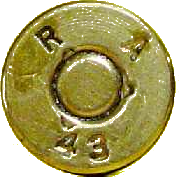Ysterhout Dot Net
In this case, it was to prevent barrel leading when using cast bullets for range practice.
I originally cast smooth shank lead bullets and powder coated them, but in this barrel they always produced excessive leading at 2000 fps. Accuracy with those lead bullets was non-existent. The bore in my rifle is pitted. It was made in 1946. At that time, ammo was corrosive, and it shows now. The pitting acts like sandpaper against the powder coat, peeling it off in the bore, and leaving lead behind.
Accuracy is good with full metal jacket bullets, the rifle shoots to point of aim.
I know the problem is with this rifle barrel, because I load cast bullets made with the same lead, powder coated, in .416 Ruger and .500 Jeffery rifles at higher velocity, with no leading and acceptable accuracy at 25 meters. My purpose is specifically range practice at 25 meters, to hit a clay pigeon size target offhand with iron sightsat that range.
The idea of paper patching came up while I was reading as much as I could find on shooting lead bullets in rifles, accurately. One source demonstrated paper patched rifle bullets impacting at 800 yards, which is more accurate than I need, and I decided it was worth a try.
There is a lot of material available on how to paper patch bullets, so I won't detail the process as it is well documented in the internet.
I'll just share with you the conclusion of my attempt to paper patch.



